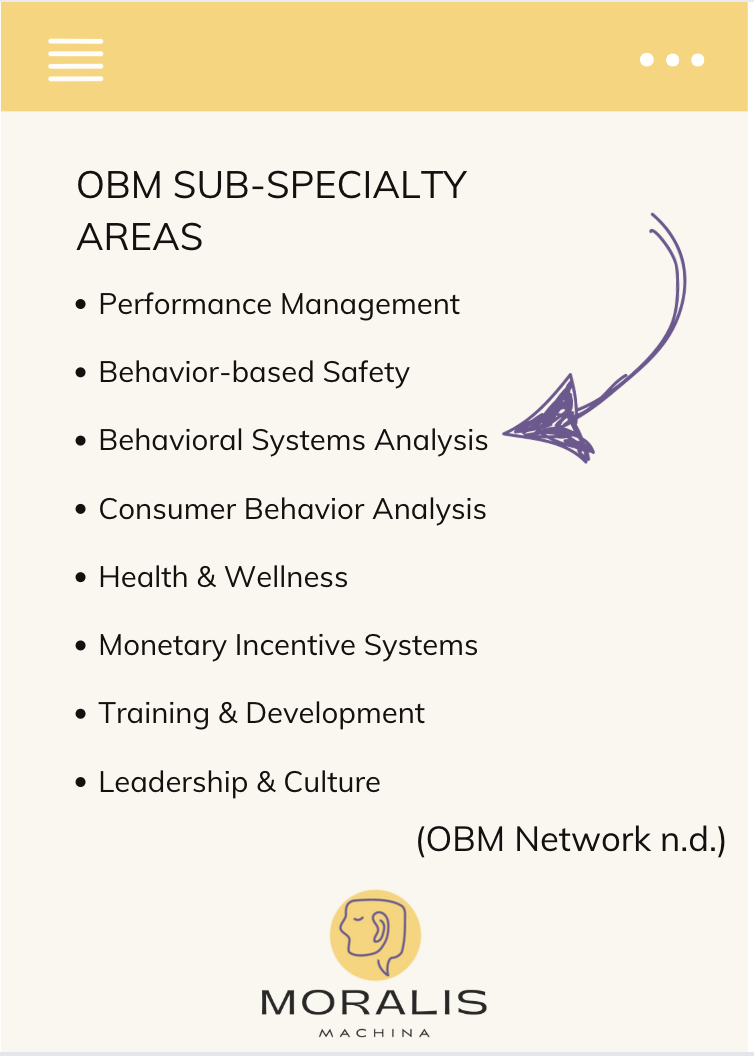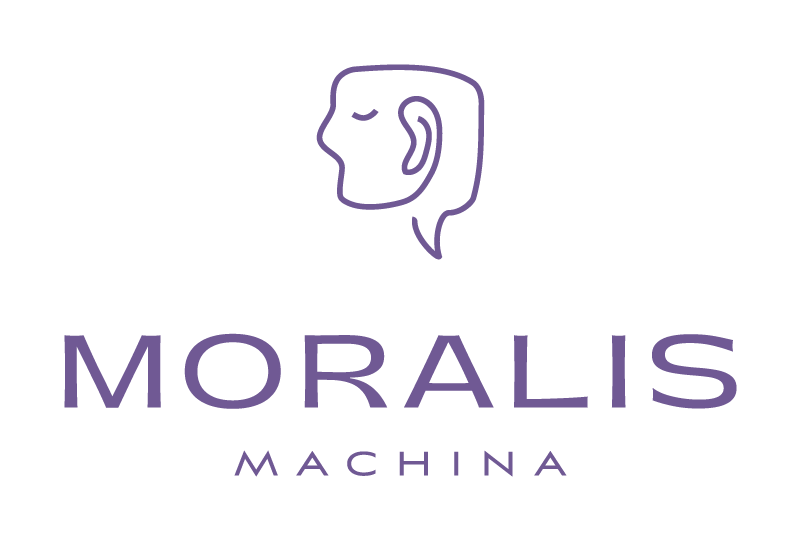WHAT IS BEHAVIORAL SYSTEMS ANALYSIS?
Behavioral Systems Analysis (BSA) is a structured approach that helps businesses improve performance by
analyzing and optimizing behaviors within an organization. It combines
behavior analysis (understanding how people behave) and
systems analysis (understanding how different parts of an organization work together) to create sustainable improvements.
Companies that use BSA can achieve better
productivity, profitability, quality, and efficiency by making sure all aspects of their operations align with their goals.
BSA is considered a sub-specialty within Organizational Behavior Management (OBM; read more about the sub-speciality areas
here). While it shares many similarities with Lean and Six Sigma approaches to process and systems improvement, it places additional emphasis on the role of the environment, and how to ensure that people are engaging in the right behaviors, at the right time.
Companies that use BSA can achieve better p
roductivity, profitability, quality, and efficiency by making sure all aspects of their operations align with their goals.

In today’s fast-changing world, businesses must adapt quickly to stay competitive. A major challenge organizations face is implementing large-scale change effectively. Without a structured plan, change efforts can lead to misalignment, inefficiencies, and employee confusion.
-
ORGANIZATIONAL LEVEL: Ensures the company's mission and strategy are aligned
-
PROCESS LEVEL: Makes sure different departments work together effectively
-
JOB/PERFORMER LEVEL: Helps individuals understand their roles and responsibilities.
This structured approach allows companies to avoid costly mistakes, improve communication, and increase overall performance.

A clear mission statement is the foundation of a successful organization. It helps guide decision-making and ensures all employees work towards common goals. Companies that fail to adapt their mission to changing market conditions—like Blockbuster, which stuck to DVD rentals while streaming services took over—risk becoming obsolete.
BSA helps us uncover areas where the aspects of our system may be out of alignment with the organization's mission, overall strategies, or we may see competing contingencies between the mission and the KPIs that are being tracked to determine the organization's health.
Most organizations have different departments like sales, finance, and operations. If these teams don’t communicate well, inefficiencies, like bottlenecks, redundancy, and poor quality are likely to occur. BSA promotes cross-functional processes, ensuring departments work together smoothly.
Looking at the how the work is actually getting done (i.e., at the process level), can help us increase the quality of the work that we are doing. Again, we use this as an opportunity to identify competition between different processes. If timelines for completing certain processes are out of alignment, or people can't get the information they need in order to complete their part, we can expect higher frustrations, lower quality outcomes, and maybe even processes that never actually get done.
Employees need clear expectations and proper support to perform at their best. BSA helps organizations:
By managing workplace variables, organizations can eliminate conflicting priorities and improve individual productivity.
This is the area that most behavior analysts are the most familiar with. We're likely to consider if people know what to do, if they can do it at the quality and speed required by the job, do it without reminders from leadership, and similar questions. You may be detecting a theme here, but once again we need to look for lack of alignment with the two previous areas. If we aren't seeing the employee performance we are hoping for, is there some competition between the tasks that the employee is expected to do, issues with the process they're assisting with, and do those behaviors align to the organization's strategic goals and KPIs?
Companies typically take two approaches to change:
Fast Implementation (Risky Approach)
Sometimes called "Lift and Shift".
The company makes changes first and deals with the problems later. This can cause inefficiencies and confusion. Think about logging in on Monday and finding out the software you've been using for the last 2 years will be phased out this week, and you have just this week to complete hours of video trainings to be ready to go next Monday.
This sort of approach isn't uncommon, causes frustration, and can tank productivity in the short term in the best case scenario. Worst case scenario, it has widespread negative impacts on the organization on a long timeline.
Systematic Change (BSA Approach)
The company analyzes its current system first, identifies necessary changes, and then implements changes gradually. This leads to smoother transitions and long-term success.
This involves exploration at all 3 levels we previous discussed; organizational, process, and performer. When we consider all 3 of these levels and make sure they're all working in alignment before he "pass go", we increase the likelihood of success, decrease organizational disruptions, and provide better, more targeted supports for our employees during these periods of change.


